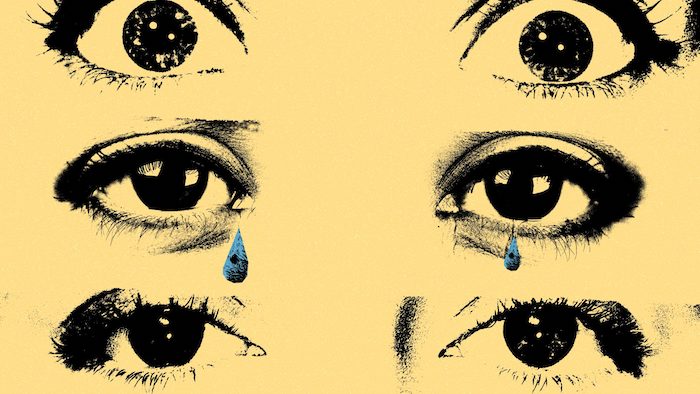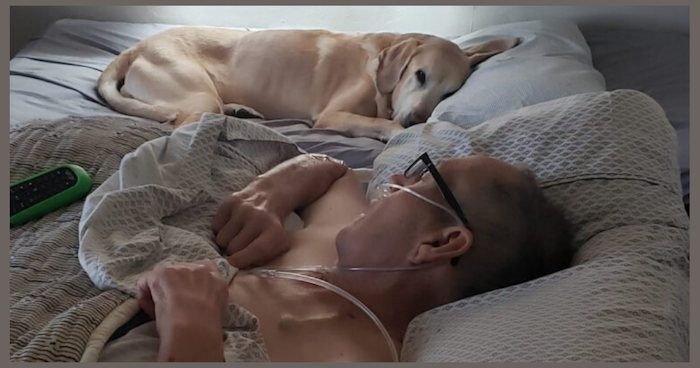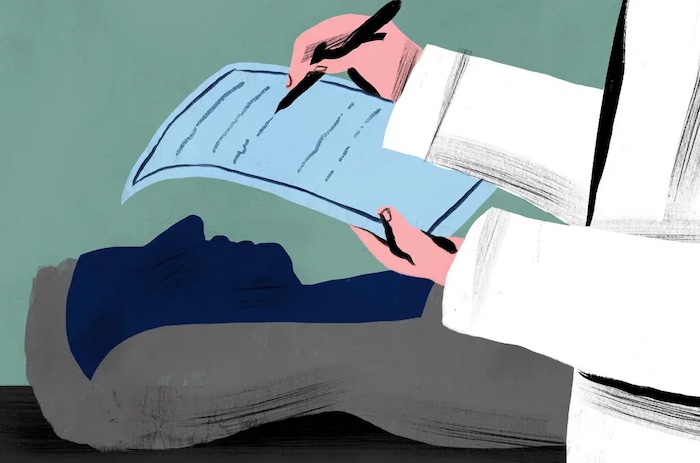
Disenfranchised grief is a natural emotional reaction following a loss that is not openly accepted by society. It is normal and expected to grieve after any loss, but not all losses are viewed equally by those around us. Not feeling welcome or comfortable to outwardly mourn or express the emotions that come with a loss can be isolating and can prolong and complicate the grieving process.
This article will define disenfranchised grief through examples, show how to recognize disenfranchised grief, and explain how it compares to other forms of grieving. It will also provide coping techniques and ideas for finding validation in mourning.
What Causes Disenfranchised Grief?
Grief affects everyone differently. Childhood experiences, attachment style (ways we relate to and interact with others), individual definitions of meaning and closeness, and the types of relationships we hold contribute to the ways we grieve and mourn.
In addition to how individuals grieve, culture and societal norms play a role in how we express grief and in defining the acceptable and unacceptable circumstances in which to grieve.
Having social support and validation of the pain that comes with loss allows bereavement to be a productive time of mourning. Grieving is more difficult when a loss isn’t validated by those around us or by society at large, and the feelings associated with the loss can be intensified.1
5 Categories of Disenfranchised Grief
There are five categories of disenfranchised grief, as outlined by Kenneth J. Doka, a mental health counselor who initially defined disenfranchised grief. These are:1
- The loss isn’t seen as important by others.
- The type of loss isn’t acknowledged or is stigmatized.
- Some people are not seen as entitled to grieve.
- The circumstances of the death are denied.
- The way grief is expressed is judged by others.
The specific circumstances around these definitions vary by culture, community, and individual family norms.
Some examples of loss that may not be accepted by social groups or society include:
- Pet loss
- Death of someone who was incarcerated or a former inmate
- Pregnancy loss
- Death of someone who was not considered to be in an appropriate or acceptable relationship, such as in the case of an affair or the loss of a same-sex partner in societies where those relationships are not accepted
- Death of a former spouse
Some losses are not related to death but still cause disenfranchised grief, because they bring significant loss and are not commonly accepted as losses. These include:2
- Diagnosis of a chronic illness in yourself or a loved one, including a physical or mental health illness
- Diagnosis of a disability
- Loss of a job
Recognizing Disenfranchised Grief
In Yourself
When grief is disenfranchised, other people don’t recognize the relationship that existed, the loss experienced, or the pain and feelings of the person who is grieving.3 This can be a lonely way to grieve, and it might feel as though it’s not OK to mourn the loss. Experiencing disenfranchised grief usually forces a person to grieve alone and in silence.
In some situations, people cause self-disenfranchised grief. This occurs when we deny ourselves the right to grieve an experienced loss. This can be intentional or unintentional and is characterized by separation from or lack of acknowledgment of the loss.1
In Someone Else
Grief should be expected after any major loss. Grief is natural and normal and allows us to work through the pain of coping with loss. When someone experiences a significant loss that isn’t commonly accepted by society and that person never talks about the loss, the subject of the loss, or how they are doing, they could be experiencing disenfranchised grief.
Societies establish rules and expectations about how to grieve. Even when a person is surrounded by people who care, they may feel isolated and unable to communicate how they are feeling for fear of judgment or lack of understanding. The person likely won’t want to discuss their experience even when directly asked.4
Other Types of Grief
There are many ways to experience grief. Grief is a unique and individual process, and the responses and reactions that follow a loss depend on the person, the circumstances surrounding the loss, the individual’s support system, and other stressors and traumatic experiences from the person’s life.
Grief that naturally follows a loss and allows a person to mourn in a way that brings meaning over time is considered normal grief. Though there is no timeline within which to grieve, in a normal grieving process, emotional reactions usually diminish within the months following the loss.
Sometimes, grief is complicated by different factors related to the individual who is grieving, the surrounding community, and societal expectations. These are some other ways grief is categorized:5
- Anticipatory grief is grief that is generally expected, such as when a person is an older adult or has been sick for a long time.
- Traumatic grief occurs when a loss is sudden or unexpected and is followed by feelings of shock and trauma.
- Complicated grief occurs when the circumstances of the loss prevent the intensity of grief symptoms from lessening over time. This is usually associated with violent or complex losses, such as homicide and suicide.
- Ambiguous grief happens when a loss does not bring emotional or psychological closure. This occurs either when the person is physically present but psychologically absent, as in the case of dementia, or when the person is psychologically present but physically gone, such as when a person is missing.
How Disenfranchised Grief Differs
Disenfranchised grief is different from other ways of grieving in that the outward expression of grief is not publicly accepted. This puts a person’s feelings in conflict with what others deem to be a real loss or one worth grieving.
Disenfranchised grief can occur even when there are other types of grief present, however. A loss can be anticipatory and also disenfranchised. Similarly, a loss can cause disenfranchised grief that turns complicated over time or that is traumatic in nature.5
What sets disenfranchised grief apart is that it does not bring out sympathy in others. This sends the message that it is not acceptable to feel or express the pain and emotions that naturally follow loss.5
Coping and Finding Validation
Finding validation can be difficult when the loss is not recognized by others. If common rituals like attending funerals and holding remembrance ceremonies are not an option, creating new rituals can bring meaning to the loss and provide a way to cope. Things that allow for honoring the loss, the person, and the relationship can bring comfort and a path to begin healing.6
Talking with a mental health professional can also be a way to find validation and sympathy when grief is disenfranchised. Grief therapy provides the space to talk about the pain of the loss and discover different ways to mourn.
Summary
Disenfranchised grief occurs when family members, social groups, and/or society don’t recognize a loss. This nonrecognition can be of a loved one who died, the relationship that existed, the person who is grieving, or the value of the loss that occurred.
When a person is unable to express their feelings and pain associated with grief, it can prolong the intensity of bereavement, cause feelings of isolation and loneliness, and complicate the natural grieving process. Seeking support from a grief therapist can provide validation and the support needed to recognize and work through the loss.
A Word From Verywell
Working through grief can be difficult even under normal circumstances. If you are grieving a loss that is not recognized or accepted by others, or if you feel you cannot talk about the person who died or the pain you are experiencing with loved ones, you could be experiencing disenfranchised grief.
To work through the most intense parts of grief, it’s helpful to find validation and support, which can come from a grief therapist. Talking with a mental health professional can provide the sympathy and space to process the loss and allow you to mourn in a healthy way.
Frequently Asked Questions
- When was disenfranchised grief first recognized?
The term disenfranchised grief was first published by licensed mental health counselor Kenneth J. Doka in the 1980s. Since then, Doka and other bereavement professionals have published many findings on the topic.
- Why is grief overlooked for some people and validated for others?
There are many factors that determine whether a person’s grief will be validated, including the type of loss, the relationship to the deceased, societal norms, and family culture and values. Circumstances like suicide, romantic relationships outside marriage, and other stigmatized situations can isolate those who are grieving. This makes them unable to talk about their loss, seek support from others, and outwardly mourn.
- Is ambiguous loss the same as disenfranchised grief?
Both ambiguous loss and disenfranchised grief are types of complicated losses that can cause prolonged grieving. Ambiguous loss occurs when there is no emotional closure, and disenfranchised grief happens when a person’s loss is not supported by others.
Though they are different classifications of grief, a person can experience both at the same time. For example, a person in a same-sex relationship in a place where homosexuality is not accepted would experience ambiguous loss if that person went missing, and disenfranchised grief because the loss could not be openly grieved.
- How long does disenfranchised grief last?
Grief does not follow a specific timeline. For many people, grief takes different forms and comes and goes for a long time. For those experiencing disenfranchised grief, the intensity of the feelings from the loss can be prolonged due to not being able to outwardly mourn. For most people, the pain of grief will lessen in the weeks to months following the loss. For those experiencing complicated or prolonged bereavement, the intense feelings of grief could last years.
Complete Article ↪HERE↩!












